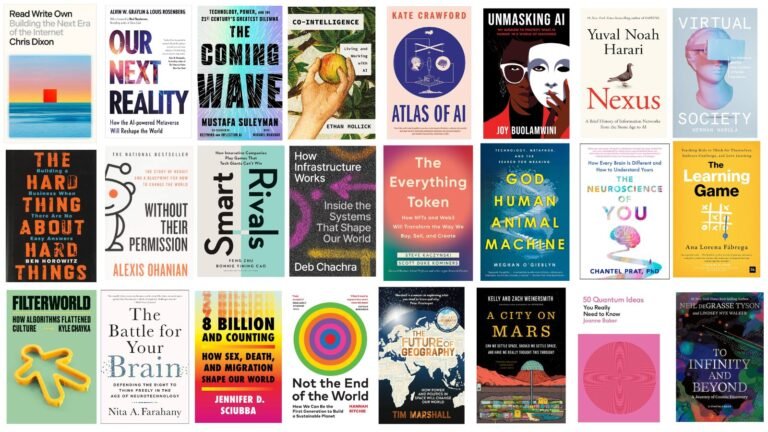The Deep Learning AI Playbook: Strategy, Use Cases, and Monetization for Disruptive AI
If it feels like artificial intelligence is moving faster than your strategy, you’re not alone. Deep learning sits at the crossroads of computer science, physics, biology, linguistics, and psychology—and it’s transforming how we discover, decide, and design. Yet for all the hype and headlines, the practical question remains: how do you turn cutting-edge AI into reliable, compounding business value?
This playbook is a pragmatic guide for operators, product leaders, and founders who want to move from demos to durable outcomes. We’ll unpack what makes deep learning uniquely disruptive, why monetization isn’t obvious, and exactly how to evaluate opportunities, ship safely, and measure ROI. Along the way, I’ll share a framework that reduces the guesswork and keeps your AI bets disciplined.
Why Deep Learning Is Different (and So Disruptive)
Deep learning is not just another algorithm. It’s a general-purpose learning substrate that scales with data, compute, and model size. In plain English: the more examples and feedback it sees, the better it gets—often in surprising ways. Researchers refer to this phenomenon as scaling laws, and they’ve documented it across modalities and tasks in large language models (LLMs) and beyond. If you’d like a primer, here’s the landmark study on Scaling Laws for Neural Language Models.
What’s unusual is how deep learning borrows from—and reshapes—other fields: – From biology, it borrows neural architectures and learning signals. – From physics, it borrows ideas about optimization and energy landscapes. – From linguistics, it learns structure, meaning, and context. – From psychology, it echoes perception, attention, and memory.
That multidisciplinarity is why deep learning can write text, analyze images, parse code, and even reason through sequences—a capability space so broad it touches most knowledge work. Here’s why that matters: when tech jumps across domains like this, it doesn’t just improve a process; it changes how you design the process in the first place.
Want to go deeper with a practitioner-friendly guide? Check it on Amazon.
The Disruption Pattern: From Tools to Team Members
At first, AI shows up like a fancy tool: autocomplete, summarization, anomaly detection. Then it becomes an assistant: it drafts, proposes, and triages. Eventually, it feels like a teammate: it anticipates needs, negotiates constraints, and optimizes objectives. Each stage expands surface area and value—but also increases risk if you’re not measuring outcomes and controlling failure modes.
If that sounds abstract, consider customer support. Early AI routed tickets. Then it suggested replies. Now it drafts responses, fetches knowledge from your docs (via retrieval-augmented generation), and escalates when confidence is low. The move from tool to teammate is where productivity curves bend—but only if you’ve done the groundwork on data, governance, and product design.
For a research-based look at human oversight in AI, see this accessible review on human-in-the-loop systems.
From Breakthrough to Business Value: The Monetization Gap
Disruption does not guarantee monetization. The web was mind-blowing in 1995, yet it took years to invent simple, scalable business models (search ads, marketplaces, SaaS). We’re in a similar moment with deep learning. The models are powerful, but where’s the durable revenue?
Here’s a practical lens: money flows where AI closes a measurable gap—cost, speed, quality, or risk—at scale. If you can baseline those gaps and tie them to P&L, monetization follows. If you can’t, you’ll demo forever.
Look for value in three layers: – Workflow acceleration: shave minutes from tasks done millions of times (documentation, QA testing, note-taking). – Decision leverage: improve hit rates where wrong decisions are expensive (fraud, pricing, routing). – Knowledge unlocks: make tacit knowledge searchable and actionable (RAG over private docs, semantic search inside CRMs).
A robust industry view of where value is emerging sits in the Stanford AI Index, which tracks adoption, investment, and impact across sectors.
Curious how this playbook looks in practice? See price on Amazon.
The Deep Learning AI Playbook: Step-by-Step Strategy
Below is a concise, repeatable sequence you can apply to any AI initiative. Think of it as a gate-based funnel: each step de-risks the next.
1) Pick Problems That Compound Value
Don’t chase novelty. Start where: – The task is frequent and expensive (tickets, audits, reconciliations). – Ground truth exists (labels, outcomes, SLAs). – Latency tolerance is known (ms, seconds, hours). – Failure has a safe boundary (human review, sandboxed actions).
Prioritize use cases using a two-by-two: business impact (high/low) vs. tractability (high/low). Aim for “high-high” quick wins to build trust, then reinvest into more ambitious bets.
Signal you’ve picked well: – You can write a crisp success metric (e.g., reduce average handle time by 20% while maintaining CSAT ≥ 4.5). – You can run a shadow mode trial (AI operates in parallel, not live). – You can quantify baseline and deltas weekly.
2) Treat Data as a Product (Not a Pile)
Models are only as good as the data and feedback you feed them. Invest early in: – A clean, versioned knowledge base for RAG (documents, code, FAQs). – Labeling pipelines with quality control (golden sets, spot checks). – Feedback loops (thumbs up/down, edit distance, next-step success). – Metadata you’ll need for evaluation (source, recency, permissions).
Best-in-class teams set up a “data product” with owners and SLAs. They treat docs like code, with reviews and automated tests. For the engineering perspective on long-term debt, read “Hidden Technical Debt in ML Systems” via NeurIPS.
Ready to upgrade your AI strategy toolkit? Shop on Amazon.
3) Build vs. Buy vs. Partner (Model Sourcing and Tools)
Choosing the right stack is strategy by another name. Use this quick decision tree:
- Buy (API-first, hosted models) when:
- You need speed to market.
- Your data is sensitive but you can restrict training usage contractually.
- You expect fast-moving model upgrades to matter.
- Fine-tune or customize when:
- Your domain vocabulary is niche.
- You have consistent failure patterns you can correct with additional data.
- You want controllability (system prompts, tools, constraints).
- Build (open weights, self-host) when:
- Unit economics demand it (very high volume, strict latency).
- Data residency or sovereignty is critical.
- You have the team to own evaluations, safety, and uptime.
Buying tips: – Ask vendors for transparent evals on your data, not generic benchmarks. – Verify privacy posture (no training on your data without explicit consent). – Check rate limits, latency SLOs, and cost at your expected volume. – Confirm tool-use support (function calling, retrieval) and guardrails.
Want a quick comparison of options and formats? View on Amazon.
For standards and governance alignment, the NIST AI Risk Management Framework is an excellent checklist to ensure your vendor and architecture meet risk expectations.
4) Design for Human-in-the-Loop (HITL) from Day One
HITL is not a concession; it’s a feature. It’s how you capture trust, generate labeled data, and keep quality in check. Design your product so humans: – See the AI’s sources and confidence. – Can edit, approve, or reject suggestions quickly. – Provide structured feedback (reasons, categories) without extra toil. – Stay in control for high-risk actions.
Treat HITL as value-creating, not cost-only: experts become editors, not executors; their choices train the system, which reduces work over time.
5) Ship with MLOps, Not “Notebooks-as-Production”
You cannot scale success without repeatability. That means: – Version every artifact (data, prompts, models). – Automate CI/CD for models and prompts. – Run offline and online evaluations before rollout. – Monitor drift, latency, cost, and satisfaction in real time. – Keep a rollback plan ready.
Google’s reference on MLOps automation pipelines offers a clear, vendor-agnostic overview you can adapt to your stack.
Prefer a concise field manual you can hand to your team? Buy on Amazon.
6) Risk, Safety, and Governance by Design
AI’s upside is matched by new classes of risk. Bake governance in early: – Safety: block harmful content, constrain tools, restrict actions. – Privacy: differentiate between training, fine-tuning, and inference use. – Security: treat prompts as inputs; defend against injection and exfiltration. – Compliance: map use cases to the EU AI Act risk tiers and the OECD AI Principles.
Adopt pre-deployment and post-deployment evaluations. Maintain an incident response playbook. Above all, make a single team accountable for risk, not “everyone and no one.”
7) Economics, Pricing, and ROI
AI that doesn’t move the P&L is theater. Quantify value with simple, auditable math:
- Direct savings: hours saved × loaded hourly rate.
- Revenue lift: conversion improvement × traffic × average order value.
- Risk reduction: expected loss reduction × incident probability.
Then fit pricing to value: – For workflow products: per-seat with usage tiers. – For decision products: performance-based or percent-of-savings. – For platforms: consumption-based with committed use discounts.
Measure weekly, not quarterly. Show deltas vs. baselines. Kill or iterate fast.
Technical Foundations That Matter (For Non-Researchers)
You don’t need a PhD to steer AI well, but you should know the knobs that change outcomes:
- Scaling and constraints: Bigger models aren’t always better if latency and cost matter; small, specialized models can win on-device or in tight loops.
- Retrieval-augmented generation (RAG): Fetch relevant, up-to-date facts from your knowledge base to ground answers and reduce hallucinations; the original paper on RAG explains why retrieval beats memorization for knowledge-heavy tasks.
- Prompting and tools: System prompts set behavior; tool-use (function calling) lets models act—query databases, schedule tasks, run code—with guardrails.
- Fine-tuning vs. instruction-tuning: Use fine-tuning when you need style, formatting, or domain mastery; use instruction-tuned models for general assistance and chain-of-thought.
- Agents (with caution): Multi-step planning and tool orchestration are powerful, but brittle; start with constrained workflows and add complexity as metrics justify it.
- Evaluation: Trust evals over vibes; maintain golden datasets and scenario tests; test for regressions after every change.
Want to try it yourself without getting lost in the weeds? See price on Amazon.
Industry Playbooks and High-ROI Use Cases
Here’s where the strategy meets the street. Pattern-match your opportunities to proven plays:
- Customer operations:
- Auto-draft replies with RAG over your help docs; route complex cases to experts.
- Metric: AHT down, FCR up, CSAT steady or higher.
- Sales and marketing:
- Personalize outreach, summarize calls, and enrich leads from public data.
- Metric: reply rate up, pipeline velocity up, rep ramp time down.
- Software engineering:
- Code completion, test generation, and legacy code summarization.
- Metric: cycle time down, defects per KLOC down, onboarding faster.
- Finance and risk:
- Invoice parsing, anomaly detection, and policy summarization.
- Metric: close time down, errors down, audit readiness up.
- Knowledge management:
- Semantic search across wikis, drive, and tickets with access controls.
- Metric: time-to-answer down, duplicate work down, knowledge reuse up.
Cross-cutting rule: if you can’t prove impact weekly, the scope is too big. Trim it until you can.
For a broad snapshot of adoption and ROI across sectors, the AI Index Report is worth bookmarking.
Operating Model: Teams, Roles, and Culture
Winning with AI is not a solo sport. Organize around outcomes, not titles: – Product leads own the problem framing and success metrics. – Data/platform engineers own infra, pipelines, and observability. – Applied scientists/ML engineers own modeling, evals, and tuning. – Design and research own UX, explainability, and HITL flows. – Legal and risk partners define policies, audits, and incident response.
Shape the culture with these habits: – “Measure or it didn’t happen.” – “Source of truth beats slideware.” – “Safety by design, not bolted on.” – “Shipping small beats planning big.”
For larger organizations, align with the NIST AI RMF so governance scales with innovation.
Metrics That Matter (North Star and Guardrails)
Pick one North Star metric per use case, then 3–5 guardrails. Example for support automation: – North Star: percentage of tickets auto-resolved with CSAT ≥ 4.5. – Guardrails: average handle time, escalation rate, hallucination incidents, and cost per ticket.
Run A/B or staged rollouts: – Start with shadow mode (no exposure). – Move to low-risk cohorts (internal users, limited intents). – Expand as metrics hold.
Common Pitfalls and How to Avoid Them
- Shiny object syndrome: Chasing new models weekly. Fix: lock a quarterly eval cadence.
- Prompt spaghetti: Unversioned prompts edited in prod. Fix: treat prompts like code.
- Missing ground truth: No labels, no learning. Fix: add HITL and capture edits.
- Cost blowouts: Token usage spikes. Fix: set budgets, compress contexts, cache results.
- Hallucination risk: Model freewheels without facts. Fix: use RAG, source grounding, and refusal patterns.
- Compliance drift: Policies written, not practiced. Fix: map controls to EU AI Act tiers and audit quarterly.
Support our work by exploring a curated companion resource: Shop on Amazon.
Ethics, Society, and the Human Horizon
Deep learning won’t just reshape products; it will reshape professions and power structures. Two truths can coexist: AI can amplify human creativity and widen inequality if we don’t manage transitions well. Invest in reskilling, transparency, and accessible tools. Engage workers early; they’re the ones who know where the real value—and real risks—live.
For balanced guidance, revisit the OECD AI Principles and the NIST AI RMF. Standards won’t solve everything, but they help align incentives beyond a single roadmap.
Key Takeaway
Deep learning is a generational platform shift, but impact comes from rigor, not magic. Pick tractable problems with measurable value. Treat data as a product. Choose the right build/buy path. Design with humans in the loop. Operationalize evaluation, safety, and cost controls. Then scale what works. If this resonates, consider subscribing for more field-tested playbooks and case studies—we’ll keep it practical and no-hype.
FAQ
Q: What is deep learning in simple terms?
A: Deep learning is a way for computers to learn patterns from examples using multi-layered neural networks. Given enough data and compute, these networks learn to perform tasks like writing text, recognizing images, or making predictions without explicit rules.
Q: How do I pick my first AI use case?
A: Choose a frequent, expensive task with clear success criteria and low risk if the model errs. Ensure you have labeled examples or can add human review to generate them. Start with a time-boxed pilot and measure weekly.
Q: What’s the difference between RAG and fine-tuning?
A: RAG retrieves relevant facts from your knowledge base at inference time to ground answers; it’s great for up-to-date or proprietary info. Fine-tuning changes model weights using your examples; it’s best for style, formatting, or domain-specific behaviors.
Q: How do I prevent AI hallucinations?
A: Ground outputs with RAG, show sources, constrain responses to allowed schemas, and implement refusal behavior when confidence is low. Monitor with targeted evals and human review for risky tasks.
Q: Do I need a data scientist to start?
A: Not necessarily. You need a product owner, an engineer comfortable with APIs and data pipelines, and a clear success metric. As you scale, add ML expertise for evaluation, tuning, and optimization.
Q: How should I think about AI costs?
A: Track unit economics: cost per task, latency, and accuracy. Use smaller models where possible, reduce context size, cache frequent results, and batch requests. Compare costs against time saved or revenue gained.
Q: Is AI adoption compliant with upcoming regulations?
A: It can be, if you map use cases to risk categories, document evaluations, and maintain human oversight for high-impact decisions. The NIST AI RMF and EU AI Act provide helpful structure.
Q: What’s the best way to measure success?
A: Define a North Star metric tied to business value (e.g., tickets auto-resolved) plus guardrails (cost, latency, safety incidents). Compare against baselines and iterate based on deltas.
Discover more at InnoVirtuoso.com
I would love some feedback on my writing so if you have any, please don’t hesitate to leave a comment around here or in any platforms that is convenient for you.
For more on tech and other topics, explore InnoVirtuoso.com anytime. Subscribe to my newsletter and join our growing community—we’ll create something magical together. I promise, it’ll never be boring!
Stay updated with the latest news—subscribe to our newsletter today!
Thank you all—wishing you an amazing day ahead!
Read more related Articles at InnoVirtuoso
- How to Completely Turn Off Google AI on Your Android Phone
- The Best AI Jokes of the Month: February Edition
- Introducing SpoofDPI: Bypassing Deep Packet Inspection
- Getting Started with shadps4: Your Guide to the PlayStation 4 Emulator
- Sophos Pricing in 2025: A Guide to Intercept X Endpoint Protection
- The Essential Requirements for Augmented Reality: A Comprehensive Guide
- Harvard: A Legacy of Achievements and a Path Towards the Future
- Unlocking the Secrets of Prompt Engineering: 5 Must-Read Books That Will Revolutionize You







